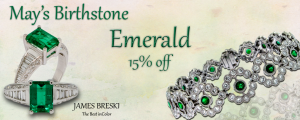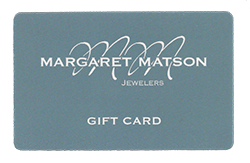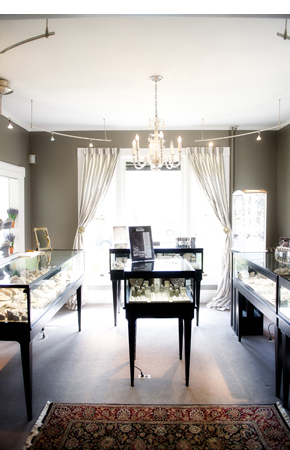 Desperate for a hint of green this spring? How about the mineral variety? May’s lovely birthstone won’t be brown in November, but instead gives the lush green of spring year round.
Desperate for a hint of green this spring? How about the mineral variety? May’s lovely birthstone won’t be brown in November, but instead gives the lush green of spring year round.
What makes it green? Emerald glows with a combination of trace elements that include chromium, vanadium and iron. The presence, absence and relative amount of each element determine the exact color of an emerald crystal. The gemstone’s appearance is sometimes also associated with where it was mined. Colombian emeralds are said to have a warmer and more intense pure green color. Zambian emeralds are said to have a cooler, more bluish green color. The truth is that the emerald’s appearance overlaps between sources. The best color is a bluish-green to pure green with vivid color saturation and tone that’s not too dark.
Emeralds are available in a variety of cuts, but its namesake is the most popular. Emerald-cut gems make the most of the mineral’s natural crystals, which are gorgeous flat-topped green hexagonal columns.
Emerald, like the March birthstone aquamarine, is part of the mineral family beryl. Beryl stones are softer, registering at 7.5 – 8 on the MOHs 10-point hardness scale. It’s important to protect this jewelry by removing it before vigorous activities; too much bumping around will literally wear the facets off the stone. When cleaning is required, gently brush over emerald jewelry using a soft bristle toothbrush dipped in a mild mixture of mostly warm water with a small touch of dish soap. No chemical soaks or sonic cleaning for this lovely green gem!
Did You Know?
The famed Hooker Emerald, mined in Colombia in the 16th or 17th century, came to Europe by Spanish conquistadors to be cut, polished and sold to the ruling family of the Ottoman Empire. It became part of the crown jewels of the Empire during the reign of Sultan Abdul Hamid II, and craftsmen fashioned the Hooker Emerald, as it is now known, as the centerpiece of a belt buckle.
In 1911, Tiffany & Co. repurposed the gem in a tiara, and eventually the jewelers redesigned it as a brooch. Janet Annenberg Hooker purchased the brooch in 1955 and later donated her namesake to the Smithsonian Institution in Washington, D.C.







No comments yet.